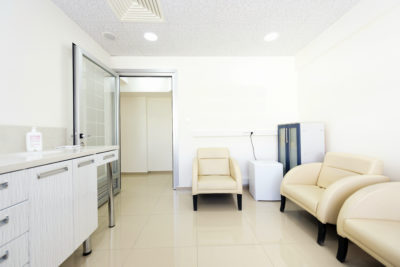During market downturns, mergers and acquisitions, and cost cutting—or even an early retirement—many tenants find that they have more office space than they need. Although this applies to tenants in multiple categories, I recently met with doctors who had opened more offices around a big city than they could maintain. Unfortunately, their monthly expenses included payments for excess space, improvements, furniture, equipment and extra personnel. Since they didn’t have termination options in their leases, the solutions included subleasing part or all of the extra space, assigning the lease to another tenant, or time-sharing—a growing alternative, particularly for physicians.
Check With the Landlord
Although most leases require notifying the landlord of the tenant’s intent to sublease or assign the space once a prospective sublessee is ready to make a commitment, some leases require earlier notification. In this case, after checking their leases to make sure they had the option to sublease or share the office space, we notified their landlords and received the required prior written consent to move forward with a marketing plan. Even if the lease does not have a sublease or assignment option, most landlords will allow a tenant to sublease the space (turning the tenant into a sublessor) if the prospective sublessee qualifies under the landlord’s reasonable requirements.
Plus: Private practice vs. hospital employee: how doctor’s decisions affect real estate | Repurposed buildings: one-stop shopping locations for patients
Take Inventory
Since more than office space was available, we took an inventory and pictures of the optional furniture, fixtures and equipment (including telephones) that could be offered for an additional amount of rent each month (or even purchased), providing the sublessee with a ready-to-go office. The marketing material also included floor plans and wide-angle shots of the rooms, building and surrounding area, plus an extra note about available personnel.
Also: Nuances of leasing medical office space | Houston’s healthcare arms race

List Your Space in the Right Place
Offering available office space to the right prospects requires placing the information on multiple online listing websites and getting creative with targeted advertising. In this case, I found a simple local website that allows doctors or their representatives to provide basic information about time-sharing or subleasing opportunities to fellow physicians. Ads in industry publications also provide another good source of prospects.
Most tenants who need office space are introduced to the available options by their tenant representatives who research the market using detailed filters. The tenant’s representative expects to be compensated for bringing the sublessee; and in most cases, the brokerage commission, which is usually a small percentage of the gross rent for the sublease and paid by the sublessor, is divided between the sublessor’s broker and sublessee’s tenant representative.
Know What the Market Will Bear
If a tenant has been in the office space for several years and lease rates have increased in the market, it may be possible to sublease the space for more than the sublessor is currently paying. Check the lease to make sure any profits (after marketing costs including brokerage fees) over the current lease costs may be kept by the sublessor, or split with the landlord. In most cases, the sublessor can expect to sublease the space for less than other space in the market or building, since the sublessee will probably need to accept it “as is.” When tenants lease directly from landlords, they often receive some custom improvements to the available space to incentivize them to lease at that building. Most sublease options are enticing because of a lower price, particularly if equipment or furniture can be included at a minimum cost, or even for free.
Consider Time Sharing
Time-share is attractive to smaller tenants who need space only a few days a week. These options can be good choices for start-up businesses, business owners who aren’t ready to commit to an executive suite, or business owners that need another location in town, but aren’t ready for a full lease. Having the ability to use office space and perhaps a conference room, business or industry-specific equipment (like installed medical equipment) and available personnel on a half-day or daily-rate basis can be the perfect, cost-effective solution.
In the doctors’ case, they were able to break even on the cost of the lease payments and brokerage fees through a sublease for the remainder of their lease term. They offered some medical equipment and furniture to the sublessee to use during the Sublease term at no additional cost. That extra incentive more than justified a current market rate, which was higher than the negotiated rate in their lease.
So when you need to get rid of extra office space, consider what else would make it attractive to a tenant needing something similar. Furniture, fixtures, equipment, in-place staff, and good deals on price—all will help when competing against vacant, more expensive options in the commercial lease market.
Beth (CCIM, LEED AP) is a healthcare real estate advisor to health systems with a specialty in the sale of investment properties including hospitals, surgery centers and medical office buildings. She was a former pilot, professional pianist, and dance instructor who co-owned a 25-thousand acre ranch in Wyoming before flipping Texas real estate to fund her early brokerage career.

 Beth Young
Beth Young

 Katie Sobotowski
Katie Sobotowski
 Shawn Janus
Shawn Janus Kevin Rude
Kevin Rude
 Jacob Mumper
Jacob Mumper